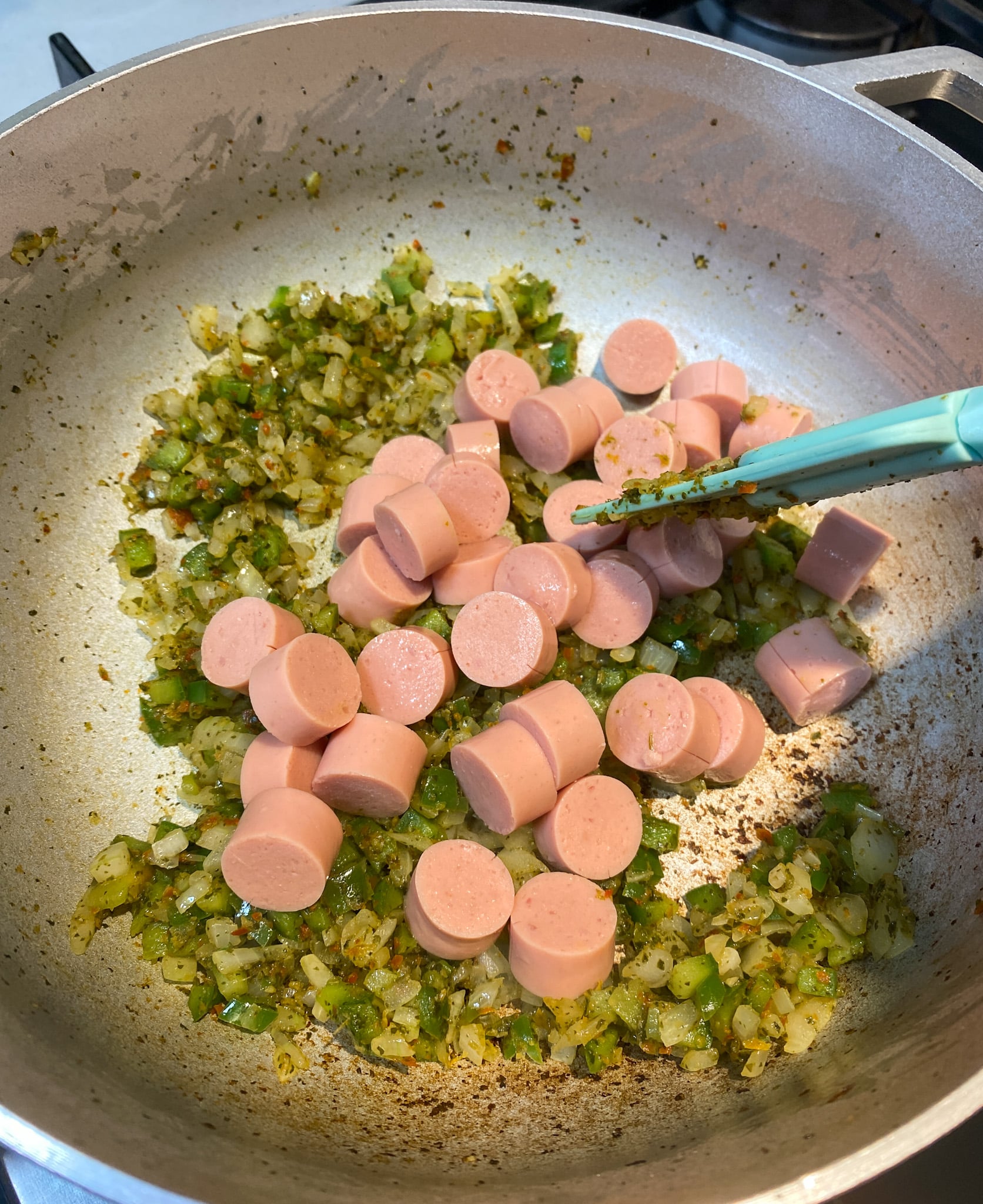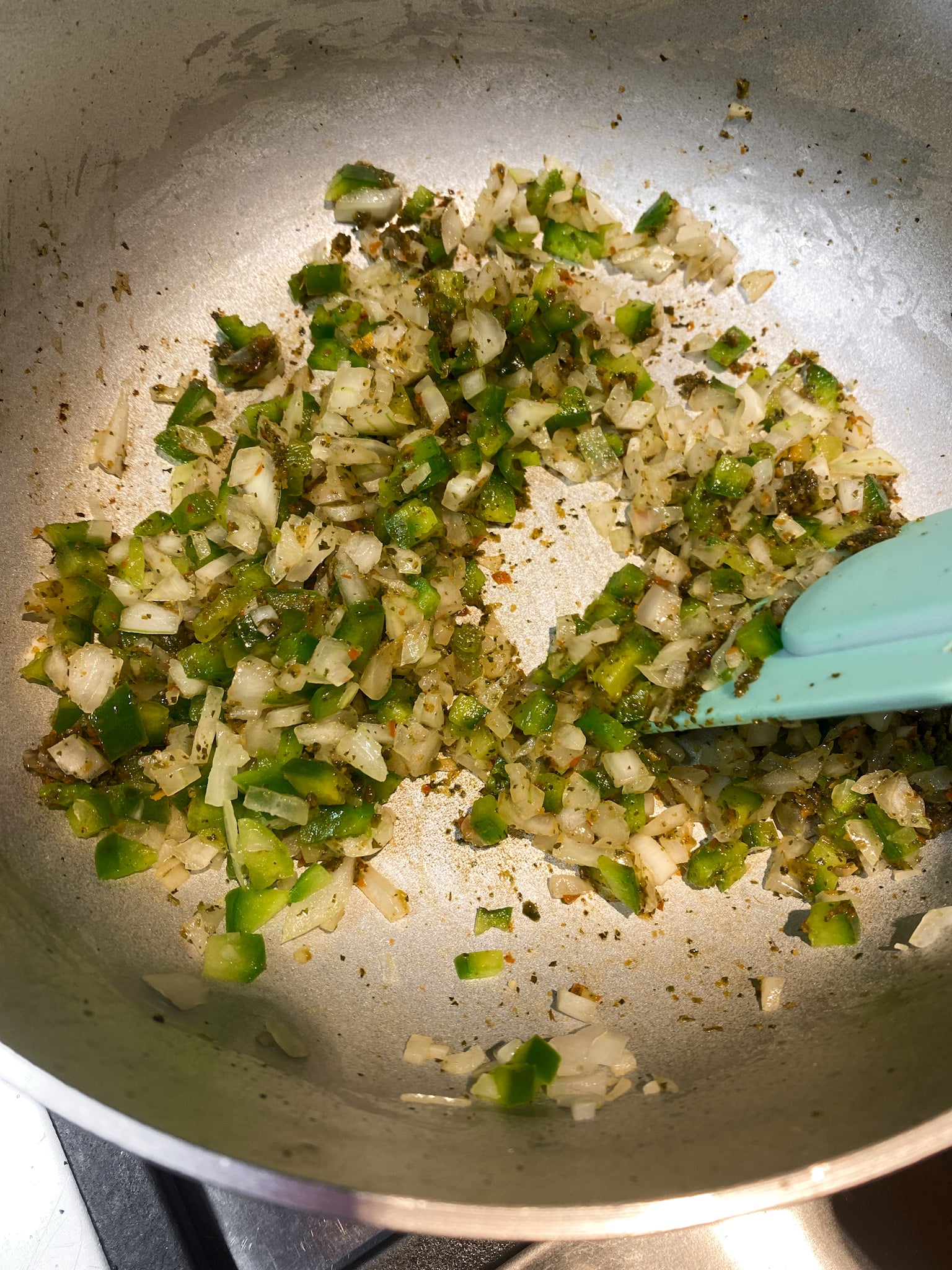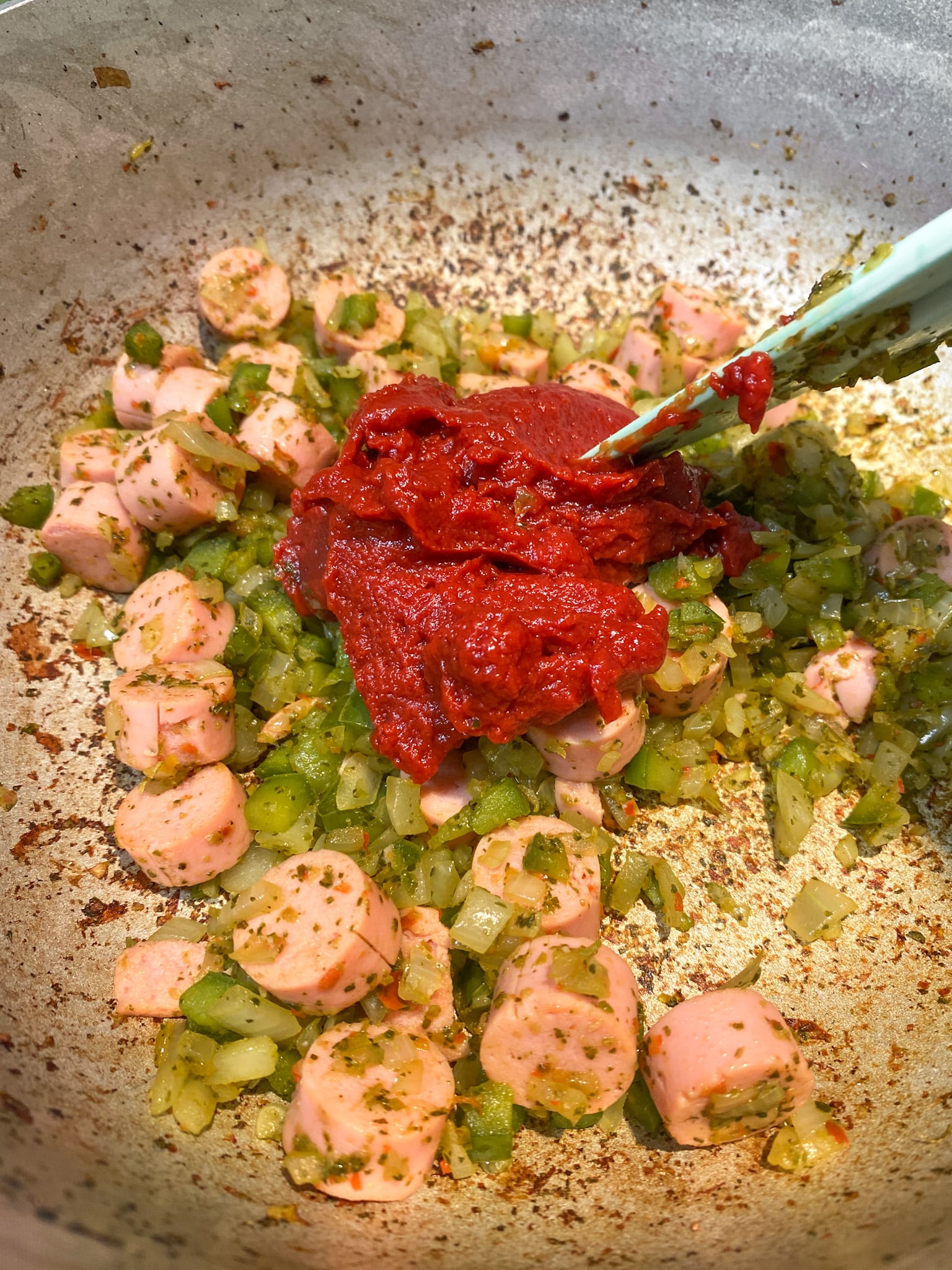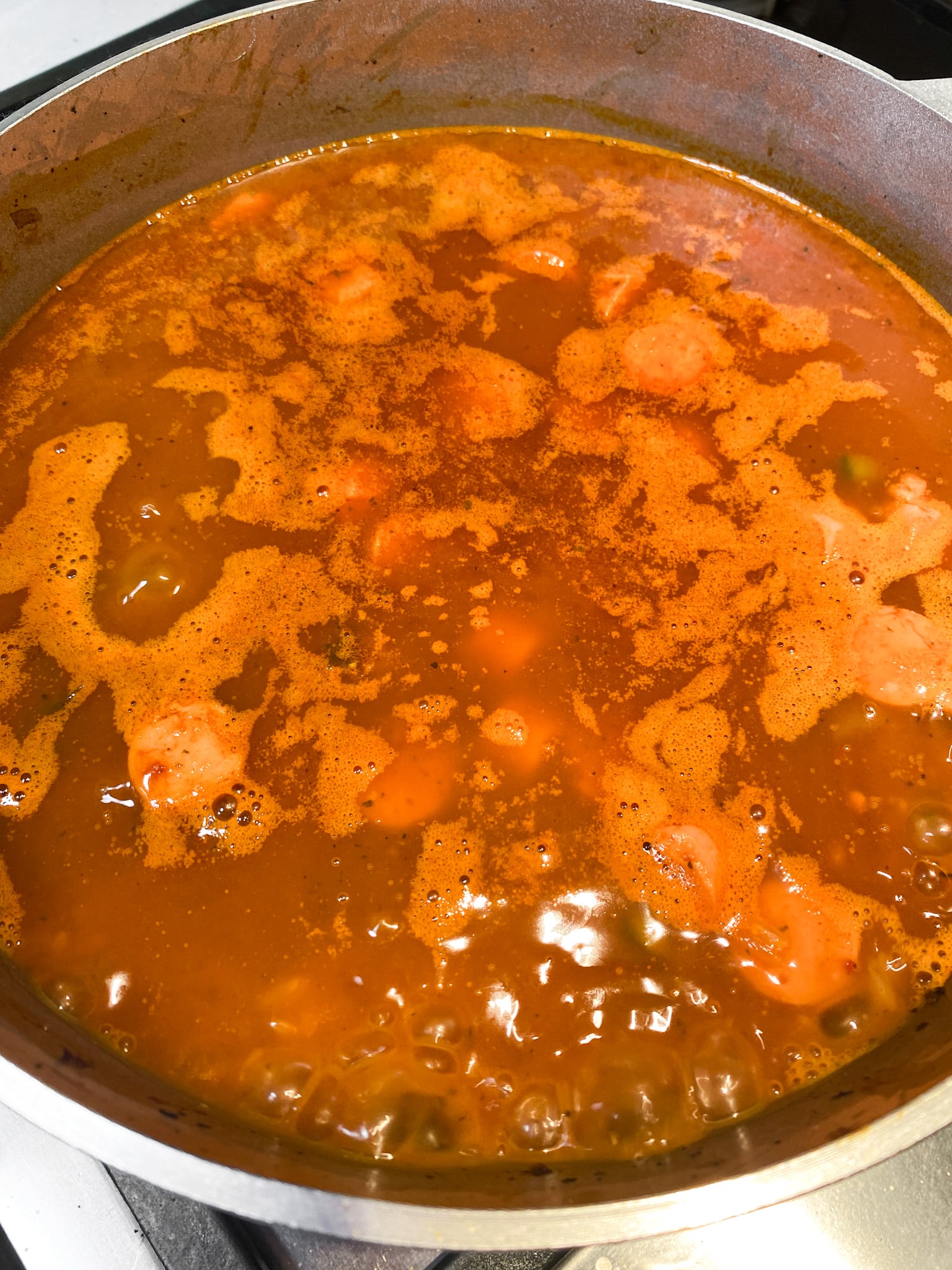Here’s How to Make Bad Bunny’s Favorite Puerto Rican Dish: Arroz Con Salchichas

As a Bad Bunny fan from the very beginning, I didn’t think it was possible to love the reggaetonero more — especially after watching him rise to fame while staying true to his Boricua roots. But I recently learned that his childhood-favorite dish is my childhood-favorite dish, and that immediately changed everything for me.
Last summer, in a Harper’s Bazaar video, Bad Bunny broke down his favorite foods while Chef Guillermo Lopez Folch cooked them in real time. The first dish the rapper mentioned was a favorite of his was arroz con salchichas, a staple in Puerto Rican and Dominican households. I grew up loving this dish. As a result, my love for Benito grew.
The thing that makes this dish irresistible to Caribeños is its nostalgic taste. Sofrito, a classic herb blend that’s in many Puerto Rican and Dominican dishes, is used to flavor this dish, in addition to spices like adobo and sazón. These spices are at the heart of almost all our dishes, so every bite of this rice tastes like home.
On the outside, this dish may seem simple, but its mix of flavors is complex — and a surefire way to a Caribeño’s heart. As a kid, I never considered whether arroz con salchichas was nutritious or not. Now that I’m approaching 30, though, it’s hard to ignore the fact that my childhood favorite isn’t exactly the healthiest dish. While it may not be “healthy” by today’s standards, it’s comfort food. And that, in itself, is nutritious.
Arroz con salchichas was originally adapted by our ancestors who had limited resources to feed their large families. They used canned sausages to get a shelf-stable protein into their meals and relied on rice to keep their children full for longer. This dish may not be the healthiest, but every bite feels like a direct connection to my roots, and that nourishes my soul.
On top of reminding me of my ancestors, arroz con salchichas puts me right back in my abuela’s kitchen at any and every age. She used to serve me a heaping bowl of it after summer camp and on weekends for lunch. Sometimes, she’d heat some up in the morning and serve it alongside buttery scrambled eggs and a slice of aguacate. Yum.
Although she isn’t here with us anymore, making and eating the meals my abuela used to make for me gives me a direct connection to her. Every time I take my caldero out to make a fresh batch of rice, I hear her behind me reminding me to fry my sofrito first. And when I sit down to take a bite of the finished product, I can hear her cracking open a bottle of Malta.
To me, this dish is synonymous with love, and (grandma aside) that’s why I would make it for Bad Bunny instantly. Benito, llámame.

Notes
You can use cubed ham steak, kielbasa, or hot dogs in place of Vienna sausages.

Ingredients
- 1 tablespoon olive oil
1/4 cup fresh or thawed sofrito
1/2 cup white onion, chopped
1/4 cup green bell pepper, chopped
1 chicken bouillon cube
1 1/2 teaspoons sazón
1 teaspoon adobo
1/4 cup tomato paste
5-7 canned Vienna sausages, chopped
2 cups parboiled rice
3 cups chicken broth
2 dried bay leaves
Salt to taste
Directions
- Heat a cast-iron or aluminum dutch oven (caldero) to medium heat, then add olive oil and sofrito. Sauté sofrito in oil for 3-4 minutes, or until fragrant.
- To the sautéed sofrito, add green pepper and onion. Sauté until the onion is translucent.
- Add the Vienna sausages, tomato paste, sazón, adobo, and chicken bouillon cube to the pot, and stir until combined.
- Pour in the chicken broth and bay leaves, then bring the mixture to a boil. While it’s coming up to a boil, taste the broth and add salt as needed.
- Once the mixture is boiling, add the rice to the dutch oven — make sure all of the raw grains of rice are evenly submerged across the top of the caldero. Let the water and rice boil for a few minutes, or until you see the rice start to absorb the liquid in the pot.
- When the top layer of water has been absorbed, stir the rice once with a wooden spoon, then place an aluminum-covered lid on top of the dutch oven and lower the burner to low.
- Remove the lid when the rice is fully cooked, about 20-25 minutes later, and simmer for another 5-10 minutes. You’ll know the rice is done when all additional liquid within the pot is gone and the rice granules are plump.
- Serve and enjoy!
Information
- Yield
- 10 servings
- Prep Time
- 10 minutes
- Cook Time
- 35 minutes
- Total Time
- 44 minutes, 59 seconds
For more latest Food & Drinks News Click Here







